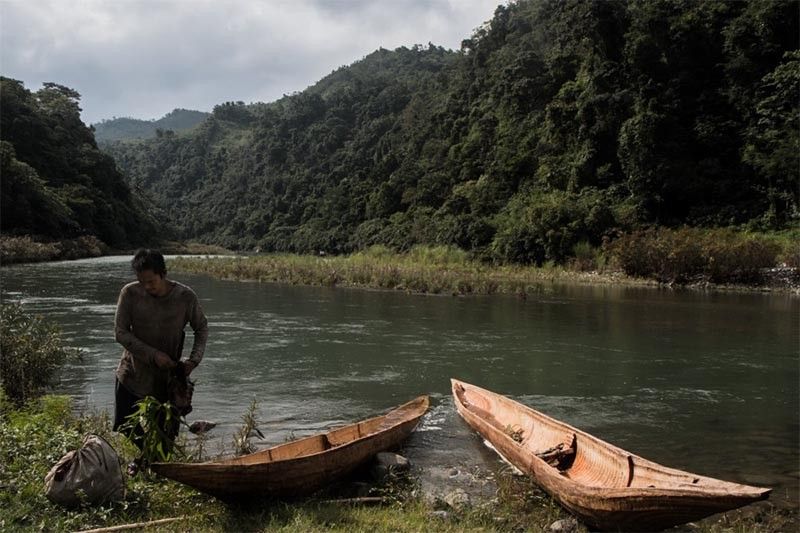Water, electricity supplies bogged down by red tape


Malacañang threatens to scrap the two water concessions in favor of a dam. Sweet revenge for parched Mega Manilans. Yet contract rescinding and dam building will not solve their water shortage. The search for tap water sources can even prolong and costs spiral.
That there’s no alternative to 52-year-old Angat Dam as source is government’s fault. It botched its 1997 privatization of water distribution. The concessionaires had been tasked to connect all home taps and develop new sources. But for popularity, successive administrations deferred the rate increases that those works entailed. In exchange, the waterworks regulator took over from the concessionaires the task of erecting new sources. One of those had been identified since 1989: Kaliwa River in the Sierra Madres that flows down to the Pacific. But as with any project, bureaucrats procrastinated – for lack of “kickback-able” plan or sheer incompetence. To now ditch the concession contracts would spur protracted lawsuits that government is likely to lose.
A related issue is the concessionaires’ failure to connect customers to sewage treatment plants. The Supreme Court first had extended their deadline to 2036, then weeks ago shortened it to 2023. That would cost the concessionaires hundreds of billions of pesos. Contesting the ruling, one of them is threatening to hike water charges by 780 percent. That double-edged sword can hurt the threatening concessionaire. What if its customers demand refund of monthly “sewage/environment fee” it has been collecting from them for decades while not building sewerages?
Damming up Kaliwa River 72 meters high is environmentally and socially contentious. Feared are the inundation of forests and Dumagat ancestral lands, and an Infanta Fault quake that could wash away the towns below. Financial and sovereignty issues complicate. The Chinese loan for it unconstitutionally attaches Filipino patrimonial assets, like Reed Bank gas and oil, in case of default. State auditors found the construction bidding rigged by three Chinese firms. The dam system would total P58.7 billion, to be charged to customers. Construction will cost P12.5 billion. Add to that a 12-km access road, P6.2 billion; and the two concessionaires’ water treatment plants, P40 billion.
A Japan-proposed alternative is to cost less than half, P21.7 billion. A weir only seven meters high will impound and divert upstream water to included treatment plants. No threat to nature or tribe folk uprooted. Has the President been told that the weir was approved in 2009?
* * *
Blackouts loom too due to shortage of generating plants. Again, has the President been briefed?
Luzon experienced again Yellow Alerts last Oct. 14 and 15. Those bring the number of Yellow Alert days this year to 45. That’s more than the total of 39 Yellow days since the start of the Duterte admin, mid-2016 to 2018.
There were also 14 days of Red Alerts, needing rotational blackouts. That’s more than in the last five years: eight since 2015.
No more hiding the truth. Last summer, during daily Yellow and Red Alerts, the Dept. of Energy said the public should not worry about Yellow Alerts.
Only two new generating plants have started operating this year. Those are SMC Consolidated Power, 150 MW; and San Buenaventura Power, 500 MW, for a total of 650 MW.
That’s far short of the 1,665 MW that the DOE in Dec. 2018 said was needed by 2019 to assure stable supply and price. Three others – AES Masinloc Power Partners, 300 MW; GNPower-Dinginin, 600 MW; and Solar Philippines-Tarlac – are in various stages of licensing, construction or commissioning. Due to red tape, it took San Buenaventura seven years to start up. When will the rest finally be cleared to run?
At 650 MW, the two new generators translate to only four percent increase in capacity. Yet DOE forecasts demand to grow 4.9 percent a year till 2040, based on NEDA’s GDP projections.
What have been the DOE’s solutions? Going by news reports, one is emergency power supply agreements with selected power plants – very expensive. Another is big factories disconnecting from Meralco, Luzon’s largest distributor, and running own small generators – again very expensive.
There are also reports of delayed generation plant startups from non-issuance of permits by the Energy Regulatory Commission. Other reports are of plants rejected for regulatory evaluation due to differences between DOE and ERC.
Expect water and power shortages in summer 2020. Last Apr.-May, although it wasn’t at fault, Meralco being the frontline was left to explain the blackouts to customers. Who will the authorities blame, when evidence point to their inaction.
* * *
Catch Sapol radio show, Saturdays, 8-10 a.m., DWIZ, (882-AM).
Gotcha archives: www.philstar.com/columns/134276/gotcha
- Latest
- Trending
























